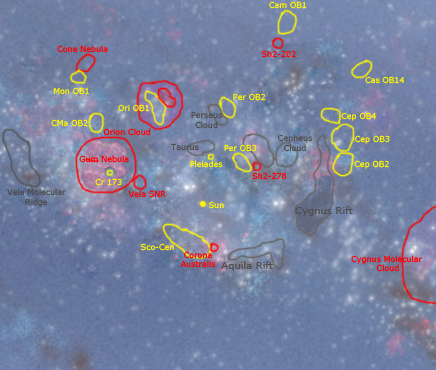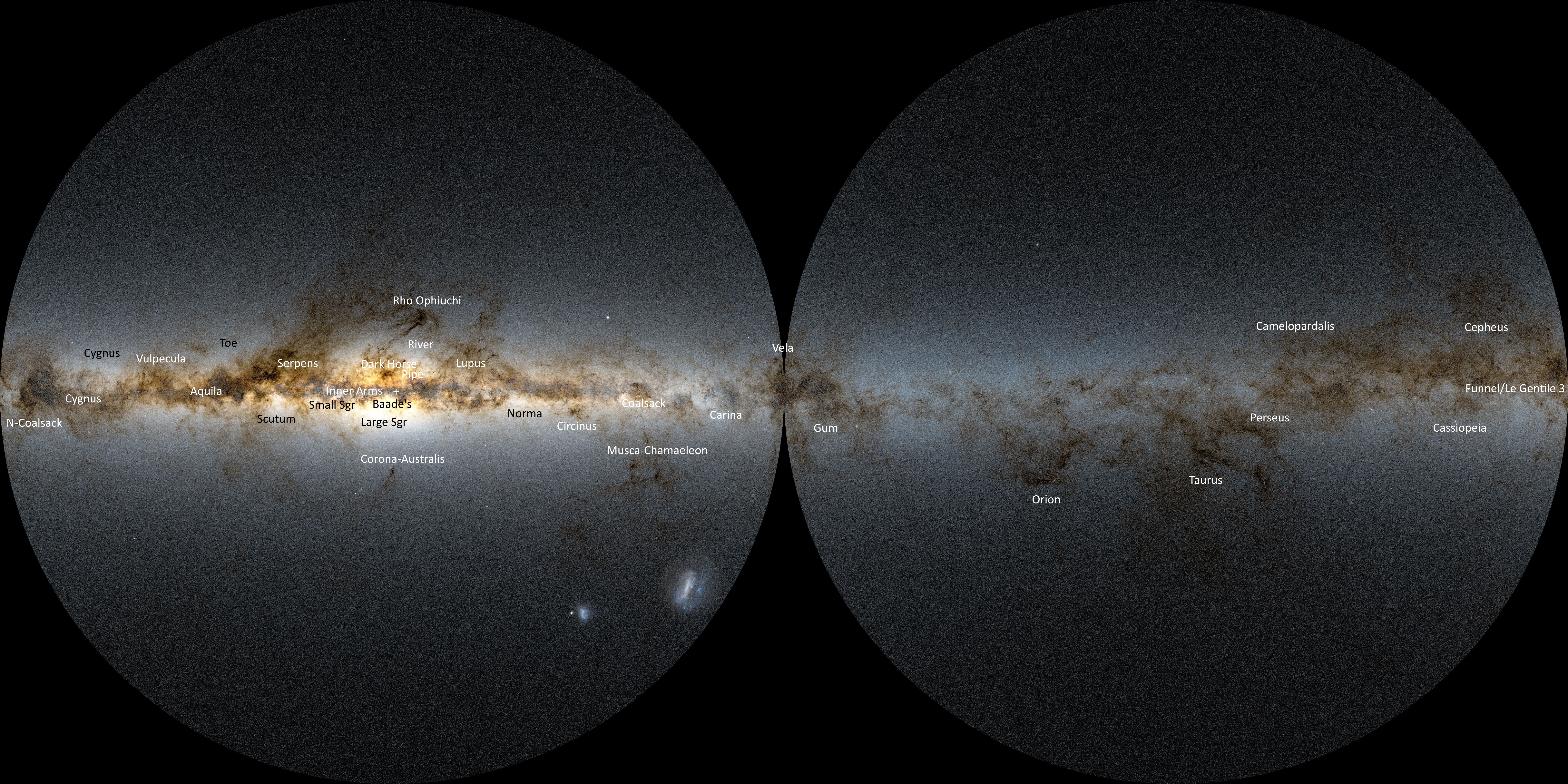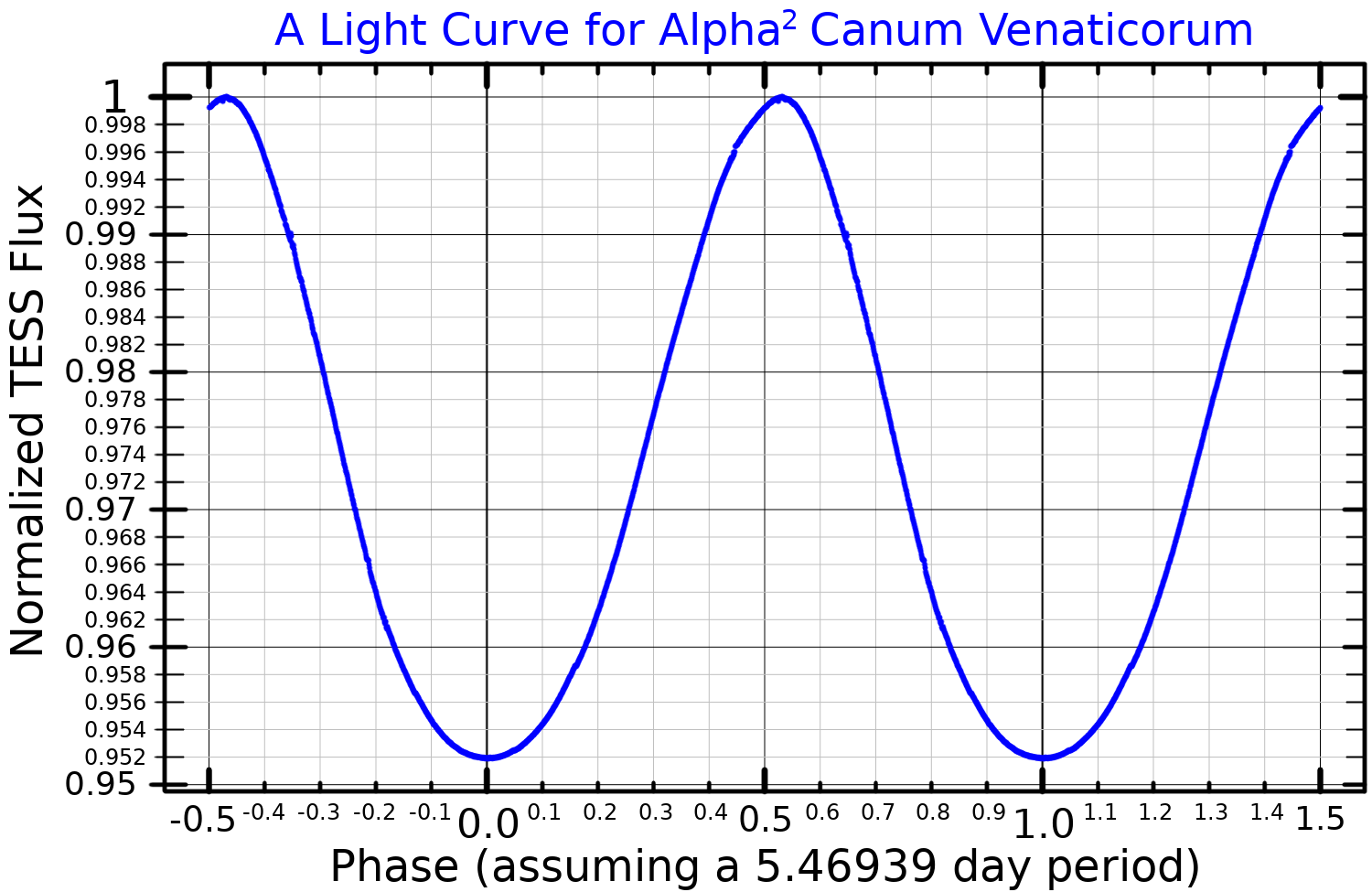|
Small Sagittarius Star Cloud
The Small Sagittarius Star Cloud (also known as Messier 24 and IC 4715) is a star cloud in the constellation of Sagittarius approximately 600 light years wide, which was catalogued by Charles Messier in 1764. It should not be confused with the nearby Large Sagittarius Star Cloud which lies about 10° to the south. The stars, clusters and other objects comprising M24 are part of the Sagittarius or Sagittarius-Carina arms of the Milky Way galaxy. Messier described M24 as a "large nebulosity containing many stars" and gave its dimensions as being some 1.5° across. Some sources, improperly, identify M24 as the small open cluster NGC 6603. The location of the Small Sagittarius Star Cloud is near the Omega Nebula (also known as M17) and open cluster Messier 18, both north of M24. M24 is one of only three Messier objects that are not actual deep sky objects. M24 fills a space of significant volume to a depth of 10,000 to 16,000 light-years. The star cloud is the most dense concentr ... [...More Info...] [...Related Items...] OR: [Wikipedia] [Google] [Baidu] |
NGC 6603
NGC 6603 is an open cluster discovered by John Herschel on July 15, 1830 located in Sagittarius (constellation), Sagittarius constellation. Situated within the brightest part of star cloud Messier 24, it is classified by Shapley as type "g". This cluster consists of about 30 stars in a field of about 5 arc minutes in diameter, and is about 9400 light years remote. Thus its linear diameter should be about 14 light years. The hottest stars are about B9 (pointing to an intermediate age of several 100 million years, an estimate of which is not known to the present author), and the brightest of photographic mag 14. Many sources improperly identify NGC 6603 as Messier 24. References External links * * NGC objects, 6603 Open clusters Astronomical objects discovered in 1830 Sagittarius (constellation) {{star-cluster-stub ... [...More Info...] [...Related Items...] OR: [Wikipedia] [Google] [Baidu] |
Binoculars
Binoculars or field glasses are two refracting telescopes mounted side-by-side and aligned to point in the same direction, allowing the viewer to use both eyes (binocular vision) when viewing distant objects. Most binoculars are sized to be held using both hands, although sizes vary widely from opera glasses to large pedestal-mounted military models. Unlike a (monocular) telescope, binoculars give users a three-dimensional image: each eyepiece presents a slightly different image to each of the viewer's eyes and the parallax allows the visual cortex to generate an impression of depth. Optical designs Galilean Almost from the invention of the telescope in the 17th century the advantages of mounting two of them side by side for binocular vision seems to have been explored. Most early binoculars used Galilean optics; that is, they used a convex objective and a concave eyepiece lens. The Galilean design has the advantage of presenting an erect image but has a narrow field of ... [...More Info...] [...Related Items...] OR: [Wikipedia] [Google] [Baidu] |
New General Catalogue
The ''New General Catalogue of Nebulae and Clusters of Stars'' (abbreviated NGC) is an astronomical catalogue of deep-sky objects compiled by John Louis Emil Dreyer in 1888. The NGC contains 7,840 objects, including galaxies, star clusters and emission nebulae. Dreyer published two supplements to the NGC in 1895 and 1908, known as the ''Index Catalogues'' (abbreviated IC), describing a further 5,386 astronomical objects. Thousands of these objects are best known by their NGC or IC numbers, which remain in widespread use. The NGC expanded and consolidated the cataloguing work of William and Caroline Herschel, and John Herschel's ''General Catalogue of Nebulae and Clusters of Stars''. Objects south of the celestial equator are catalogued somewhat less thoroughly, but many were included based on observation by John Herschel or James Dunlop. The NGC contained multiple errors, but attempts to eliminate them were made by the ''Revised New General Catalogue'' (RNGC) by Jack W. Sulent ... [...More Info...] [...Related Items...] OR: [Wikipedia] [Google] [Baidu] |
List Of Messier Objects
The Messier objects are a set of 110 astronomical objects catalogued by the French astronomer Charles Messier in his ''Catalogue des Nébuleuses et des Amas d'Étoiles'' (''Catalogue of Nebulae and Star Clusters''). Because Messier was only interested in finding comets, he created a list of those non-comet objects that frustrated his hunt for them. The compilation of this list, in collaboration with his assistant Pierre Méchain, is known as ''the Messier catalogue''. This catalogue of objects is one of the most famous lists of astronomical objects, and many Messier objects are still referenced by their Messier numbers. The catalogue includes most of the astronomical deep-sky objects that can easily be observed from Earth's Northern Hemisphere; many Messier objects are popular targets for amateur astronomers. A preliminary version first appeared in 1774 in the ''Memoirs'' of the French Academy of Sciences for the year 1771. The first version of Messier's catalogue contai ... [...More Info...] [...Related Items...] OR: [Wikipedia] [Google] [Baidu] |
Messier Object
The Messier objects are a set of 110 astronomical objects catalogued by the French astronomer Charles Messier in his ''Catalogue des Nébuleuses et des Amas d'Étoiles'' (''Catalogue of Nebulae and Star Clusters''). Because Messier was only interested in finding comets, he created a list of those non-comet objects that frustrated his hunt for them. The compilation of this list, in collaboration with his assistant Pierre Méchain, is known as ''the Messier catalogue''. This catalogue of objects is one of the most famous lists of astronomical objects, and many Messier objects are still referenced by their Messier numbers. The catalogue includes most of the astronomical deep-sky objects that can easily be observed from Earth's Northern Hemisphere; many Messier objects are popular targets for amateur astronomers. A preliminary version first appeared in 1774 in the ''Memoirs'' of the French Academy of Sciences for the year 1771. The first version of Messier's catalogue contain ... [...More Info...] [...Related Items...] OR: [Wikipedia] [Google] [Baidu] |
Andromeda Galaxy
The Andromeda Galaxy (IPA: ), also known as Messier 31, M31, or NGC 224 and originally the Andromeda Nebula, is a barred spiral galaxy with the diameter of about approximately from Earth and the nearest large galaxy to the Milky Way. The galaxy's name stems from the area of Earth's sky in which it appears, the constellation of Andromeda, which itself is named after the princess who was the wife of Perseus in Greek mythology. The virial mass of the Andromeda Galaxy is of the same order of magnitude as that of the Milky Way, at . The mass of either galaxy is difficult to estimate with any accuracy, but it was long thought that the Andromeda Galaxy is more massive than the Milky Way by a margin of some 25% to 50%. This has been called into question by a 2018 study that cited a lower estimate on the mass of the Andromeda Galaxy, combined with preliminary reports on a 2019 study estimating a higher mass of the Milky Way. The Andromeda Galaxy has a diameter of about , making it the ... [...More Info...] [...Related Items...] OR: [Wikipedia] [Google] [Baidu] |
NGC 206
NGC 206 is a bright star cloud in the Andromeda Galaxy. It is notable for being the brightest star cloud in Andromeda as viewed from Earth. Features NGC 206 is the richest and most conspicuous star cloud in the Andromeda Galaxy as well as one of the largest and brightest star formation regions of the Local Group. It contains more than 300 stars brighter than Mb=−3.6. It was originally identified by Edwin Hubble as a star cluster but today, due to its size, it is classified as an OB association. NGC 206 is located in a spiral arm of the Andromeda Galaxy, in a zone free of neutral hydrogen and has a double structure, with one region that has an age of around 10 million years and includes several H II regions in one of its borders and other with an age of between 40 million years and 50 million years that includes a number of cepheids. Both parts are separated by a band of interstellar dust and include hundreds of stars of spectral type O and B. See also * List of Andromed ... [...More Info...] [...Related Items...] OR: [Wikipedia] [Google] [Baidu] |
Edward Emerson Barnard
Edward Emerson Barnard (December 16, 1857 – February 6, 1923) was an American astronomer. He was commonly known as E. E. Barnard, and was recognized as a gifted observational astronomer. He is best known for his discovery of the high proper motion of Barnard's Star in 1916, which is named in his honor. Early life Barnard was born in Nashville, Tennessee, to Reuben Barnard and Elizabeth Jane Barnard (''née'' Haywood), and had one brother. His father died three months before his birth, so he grew up in an impoverished family and did not receive much in the way of formal education. His first interest was in the field of photography, and he became a photographer's assistant at the age of nine. He later developed an interest in astronomy. In 1876 he purchased a refractor telescope, and in 1881 he discovered his first comet, but failed to announce his discovery. He found his second comet later the same year and a third in 1882. While he was still working at a photography studio ... [...More Info...] [...Related Items...] OR: [Wikipedia] [Google] [Baidu] |
List Of Dark Nebulae
This is a list of dark nebulae (absorption nebulae), also called "dark clouds". List *E Nebula ( Barnard 142 and 143) *Barnard 68, possibly the closest to Earth at about 400 light-years. *Bernes 157 (Sandqvist and Lindroos, SL 39-41), another close dark nebula of the Corona Australis Molecular Cloud, which includes NGC 6729 Named absorption nebulae See also the references to names from other cultures at dark cloud constellations: *Coalsack Nebula *Cone Nebula *Dark Doodad Nebula * Dark Horse Nebula *Horsehead Nebula ( Barnard 33) *Pipe Nebula (also see Dark Horse Nebula; includes Barnard 59, 77 and 78) * Snake Nebula (also see Dark Horse Nebula) * Keyhole Nebula Barnard objects See also *Lists of astronomical objects *Nebula *Dark nebulae * Bok globules External linksEast Valley Astronomical Society Barnard Dark Nebulae Observing Program [...More Info...] [...Related Items...] OR: [Wikipedia] [Google] [Baidu] |
Dark Nebula
A dark nebula or absorption nebula is a type of interstellar cloud, particularly molecular clouds, that is so dense that it obscures the visible wavelengths of light from objects behind it, such as background stars and emission or reflection nebulae. The extinction of the light is caused by interstellar dust grains located in the coldest, densest parts of molecular clouds. Clusters and large complexes of dark nebulae are associated with Giant Molecular Clouds. Isolated small dark nebulae are called Bok globules. Like other interstellar dust or material, things it obscures are only visible using radio waves in radio astronomy or infrared in infrared astronomy. Dark clouds appear so because of sub-micrometre-sized dust particles, coated with frozen carbon monoxide and nitrogen, which effectively block the passage of light at visible wavelengths. Also present are molecular hydrogen, atomic helium, C18O (CO with oxygen as the 18O isotope), CS, NH3 (ammonia), H2CO (formaldehyde), c-C3 ... [...More Info...] [...Related Items...] OR: [Wikipedia] [Google] [Baidu] |
Alpha2 Canum Venaticorum Variable
An Alpha2 Canum Venaticorum variable (or α2 CVn variable) is a type of variable star. These stars are chemically peculiar star, chemically peculiar main sequence stars of stellar classification, spectral class B8p to A7p. They have strong magnetic fields and strong silicon, strontium, or chromium spectral lines. Their brightness typically varies by 0.01 to 0.1 Apparent magnitude, magnitudes over the course of 0.5 to 160 days. In addition to their intensities, the intensities and profiles of the spectral lines of α2 CVn variables also vary, as do their magnetic fields. The periods of these variations are all equal and are believed to equal the period of rotation of the star. It is thought that they are caused by an inhomogeneous distribution of metals in the atmospheres of these stars, so that the surface of the star varies in brightness from point to point. The type-star which this class is named after is Cor_Caroli#α2_Canum_Venaticorum, α² Canum Venaticorum, a star in ... [...More Info...] [...Related Items...] OR: [Wikipedia] [Google] [Baidu] |
Supergiant Star
Supergiants are among the most massive and most luminous stars. Supergiant stars occupy the top region of the Hertzsprung–Russell diagram with absolute visual magnitudes between about −3 and −8. The temperature range of supergiant stars spans from about 3,400 K to over 20,000 K. Definition The title supergiant, as applied to a star, does not have a single concrete definition. The term ''giant star'' was first coined by Hertzsprung when it became apparent that the majority of stars fell into two distinct regions of the Hertzsprung–Russell diagram. One region contained larger and more luminous stars of spectral types A to M and received the name ''giant''. Subsequently, as they lacked any measurable parallax, it became apparent that some of these stars were significantly larger and more luminous than the bulk, and the term ''super-giant'' arose, quickly adopted as ''supergiant''. Spectral luminosity class Supergiant stars can be identified on the basis of ... [...More Info...] [...Related Items...] OR: [Wikipedia] [Google] [Baidu] |










